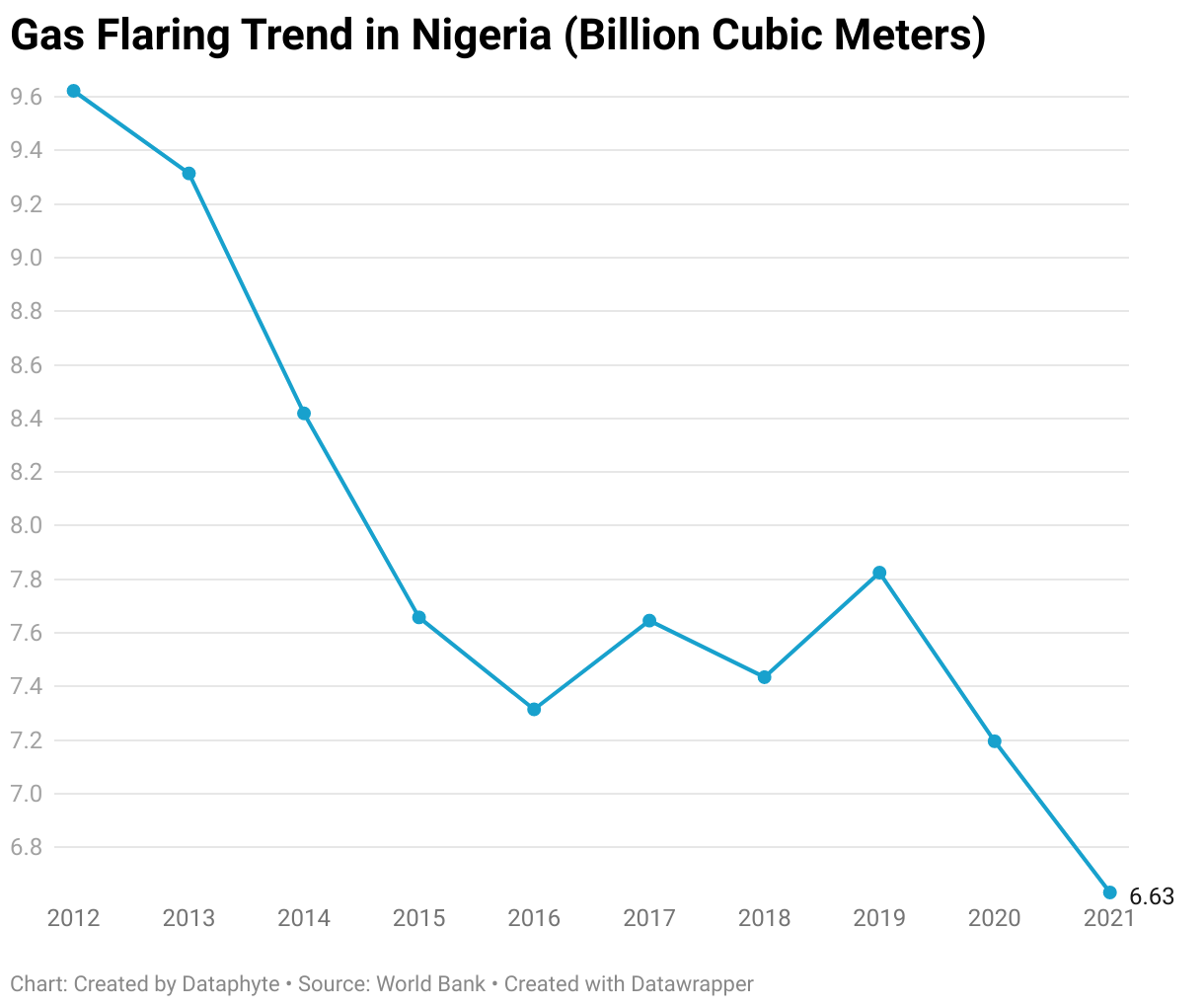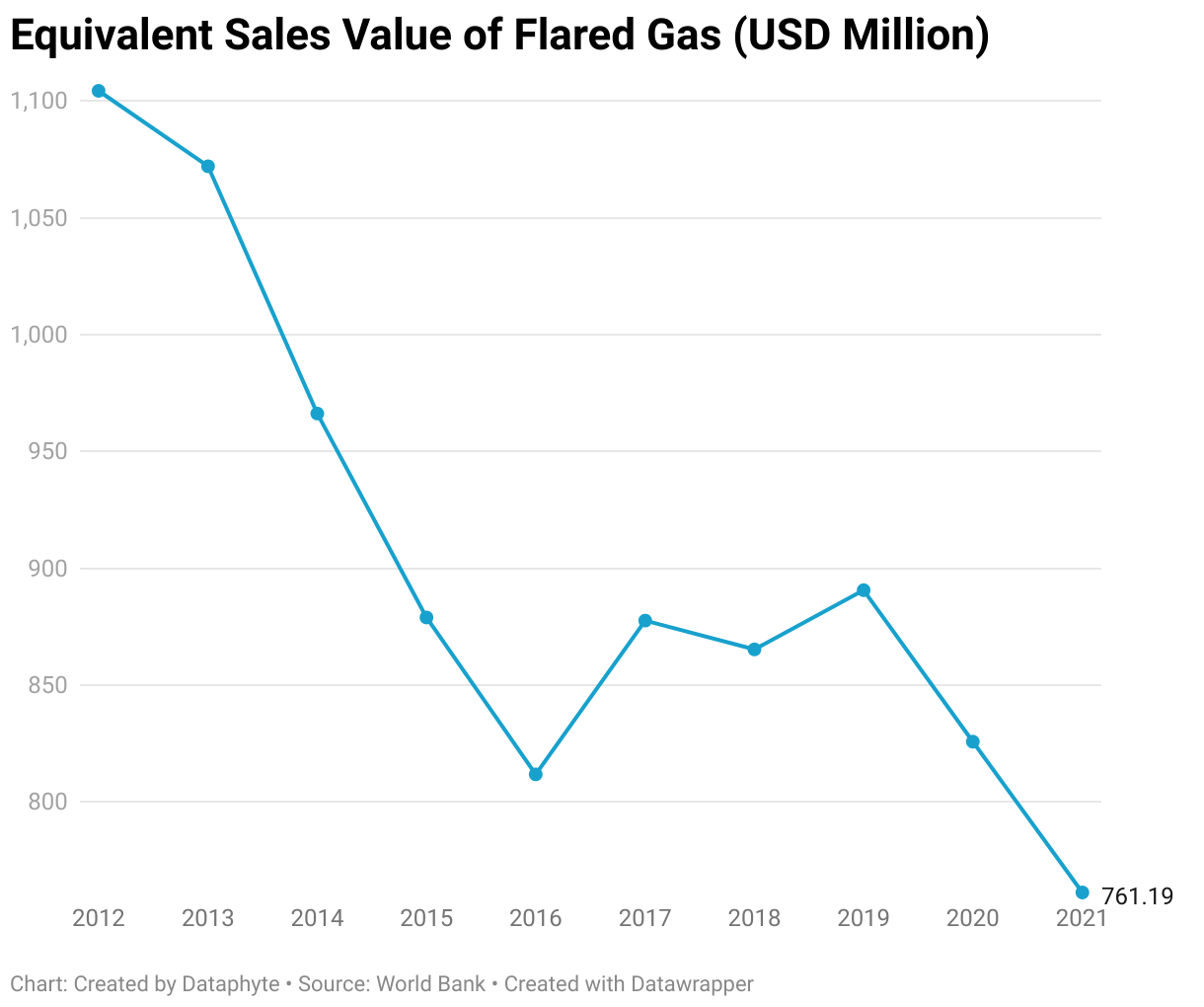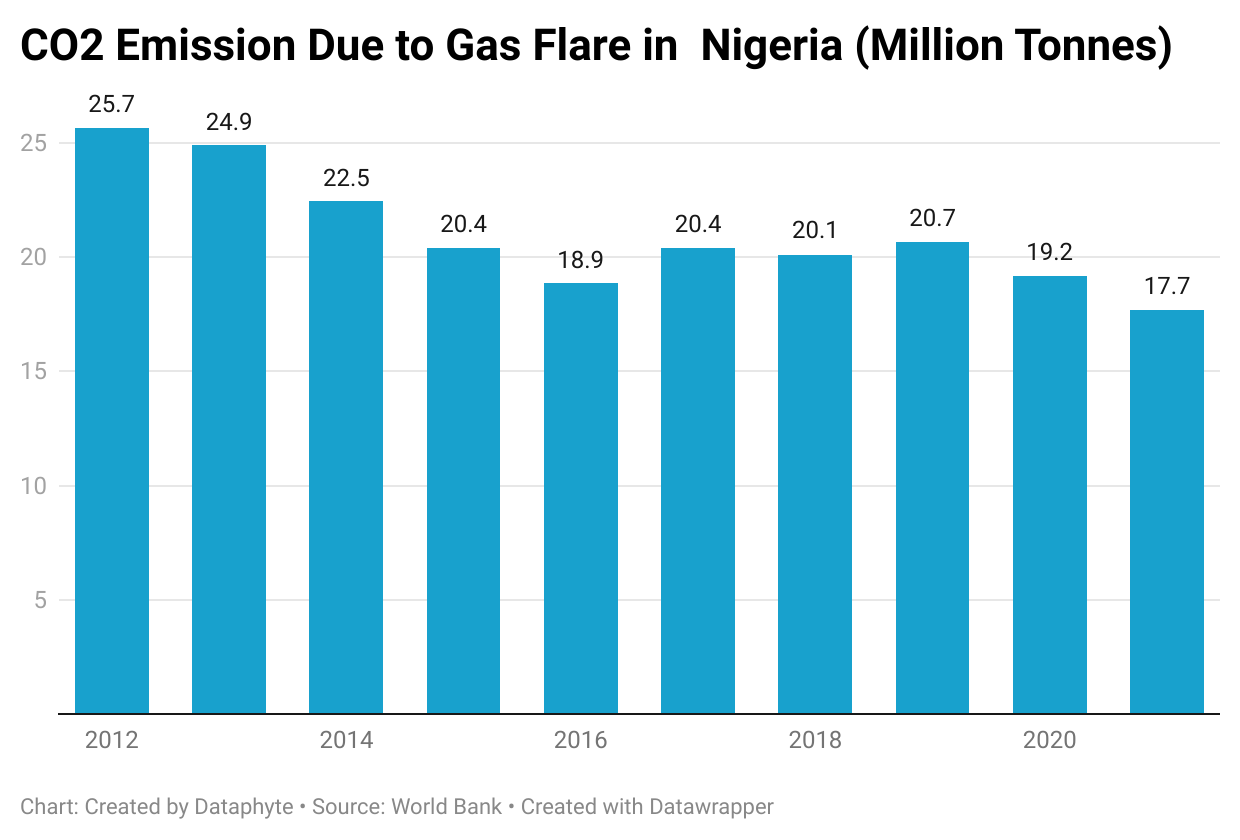Approximately 6.63 billion cubic metres (bcm) of gas was flared across the various oil fields in Nigeria in 2021.
The flaring trend shows that the volume flared in 2021 represents the least flared output. Also, it shows a continuous reduction in flaring in the last three years as flared output dropped from 7.82 bcm in 2019 to 7.19 bcm in 2020 and then 6.63 bcm in 2021.

While Gas flaring, which is the combination of associated gas generated during production, is on a downward trend, it still signifies significant revenue losses for Nigeria especially because of the insufficient revenue burden that the country is facing. Flared gas has a significant impact on the economy and by extension development.
Loss of Potential Revenue to the Government
In 2021, an estimated $761.19 million was lost to gas flaring. A total of N316.5 billion monetary value would have accrued to the government if it had captured this volume island repurposed it.
This sum would have helped the country provide basic amenities, as stated in the 2022 fiscal budget. The amount would have financed the total expenditure for Primary Health Centres (PHCs), rural electrification projects, and the maintenance of all road and bridge projects by the Federal Road Maintenance Agency (FERMA). These have a collective figure of N227.13 billion.
A breakdown shows that N24.4 billion was budgeted for PHCs, N113.96 billion for rural electrification, and N88.76 billion for FERMA.
In the last decade, approximately $9.05 billion has been lost to gas flaring. This money would have offset 23.62% of the country’s total foreign debt of $38.32 billion.

Pressure on Climate Change
Climate change remains one of the leading development challenges facing societies today. Thus, finding solutions to the wastefulness of gas flaring will enhance a carbon-free atmosphere. While the ultimate goal is to transit to clean energy, mitigating climate change is also recommended to reduce the impact on development.
Climate issues pose great challenges in terms of the development cost for Nigeria and other developing countries. It is estimated that these countries have a financing gap of $700 billion annually to provide climate resilient infrastructure facilities.
This pressure is mounted in Nigeria with carbon dioxide (CO2) emissions from flared gas. The flaring of 6.63 bcm of gas in 2021 released at least 17.7 million tonnes of carbon dioxide into the atmosphere. It is estimated that one cubic metre of gas produces 2.8 kg of carbon dioxide.
Gas flaring alone has released 210.36 million tonnes of carbon dioxide in the last decade. The impact on the environment including biodiversity is significant.

Loss of Energy Resources
Aside from the loss of revenue, gas flares constitute a loss of energy resources. A gas flare is judged as the single most enormous loss in many industrial operations. This culminates in the loss of valuable economic resources and sources for emissions.
Gas flaring has denied the government potential revenue to fund development projects. It has also increased development costs by adding to the overall cost of providing resilient infrastructure. A solution to gas flaring will enhance sustainable development in the country.





